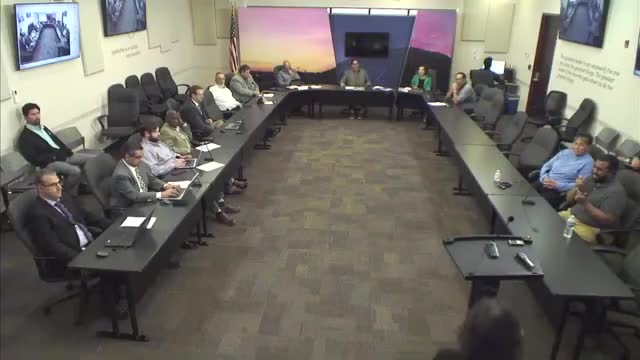Staff briefs Plan Commission on Envision El Paso future land‑use map and public engagement
October 23, 2025 | El Paso City, El Paso County, Texas
This article was created by AI summarizing key points discussed. AI makes mistakes, so for full details and context, please refer to the video of the full meeting. Please report any errors so we can fix them. Report an error »

Casey Schnell, project lead on the Envision El Paso comprehensive plan update, presented an informational briefing to the El Paso City Plan Commission on Oct. 23 describing the future land‑use map (FLUM) phase of the update and the community engagement that has informed proposed place types.
"Envision El Paso is our comprehensive plan update to the 2012 Plan El Paso, and our mission is to really guide fair and sustainable growth and development and land investment to increase opportunity for all El Pasoans," Schnell said. She summarized five themes that guided the plan update: housing affordability, mobility choice, sustainable living, economic development and fiscal responsibility.
Schnell explained the FLUM's role as an overarching policy tool distinct from zoning, and said staff is proposing 11 place types grouped into six categories (neighborhoods, corridors, centers, downtown, employment and civic/open space). The materials outlined criteria for each place type — character, street types, adjacencies and allowable height/intensity — and included visualization packets intended to be accessible to nontechnical audiences.
Schnell said the city is required to follow the Texas Local Government Code once the comprehensive plan is updated; staff has completed vision and goals work, has conducted district workshops and other engagement, and plans additional meetings with council district representatives and public forums before releasing a draft map.
During discussion commissioners raised neighborhood concerns. One commissioner described long‑standing problems in South Central El Paso along the Alameda corridor where commercial parcels have become car lots or junkyards. Schnell and other staff said the FLUM can guide future desired uses and that implementation through updated development codes and neighborhood plans would be necessary to change on‑the‑ground outcomes; planning staff noted the zoning code and development regulations are older and require alignment with the comprehensive plan to achieve the envisioned outcomes.
Schnell said staff has held workshops (one per council district) and open sessions, and reported roughly 175 participants to date; staff plans targeted district meetings and a housing needs assessment as next steps before public release of a draft FLUM.
The presentation was informational; no formal commission vote was taken during the briefing. Commissioners asked staff to continue community outreach in coordination with council members and to consider implementation steps that would couple the FLUM updates with development‑code revisions and stronger code enforcement where needed.
"Envision El Paso is our comprehensive plan update to the 2012 Plan El Paso, and our mission is to really guide fair and sustainable growth and development and land investment to increase opportunity for all El Pasoans," Schnell said. She summarized five themes that guided the plan update: housing affordability, mobility choice, sustainable living, economic development and fiscal responsibility.
Schnell explained the FLUM's role as an overarching policy tool distinct from zoning, and said staff is proposing 11 place types grouped into six categories (neighborhoods, corridors, centers, downtown, employment and civic/open space). The materials outlined criteria for each place type — character, street types, adjacencies and allowable height/intensity — and included visualization packets intended to be accessible to nontechnical audiences.
Schnell said the city is required to follow the Texas Local Government Code once the comprehensive plan is updated; staff has completed vision and goals work, has conducted district workshops and other engagement, and plans additional meetings with council district representatives and public forums before releasing a draft map.
During discussion commissioners raised neighborhood concerns. One commissioner described long‑standing problems in South Central El Paso along the Alameda corridor where commercial parcels have become car lots or junkyards. Schnell and other staff said the FLUM can guide future desired uses and that implementation through updated development codes and neighborhood plans would be necessary to change on‑the‑ground outcomes; planning staff noted the zoning code and development regulations are older and require alignment with the comprehensive plan to achieve the envisioned outcomes.
Schnell said staff has held workshops (one per council district) and open sessions, and reported roughly 175 participants to date; staff plans targeted district meetings and a housing needs assessment as next steps before public release of a draft FLUM.
The presentation was informational; no formal commission vote was taken during the briefing. Commissioners asked staff to continue community outreach in coordination with council members and to consider implementation steps that would couple the FLUM updates with development‑code revisions and stronger code enforcement where needed.
View full meeting
This article is based on a recent meeting—watch the full video and explore the complete transcript for deeper insights into the discussion.
View full meeting
